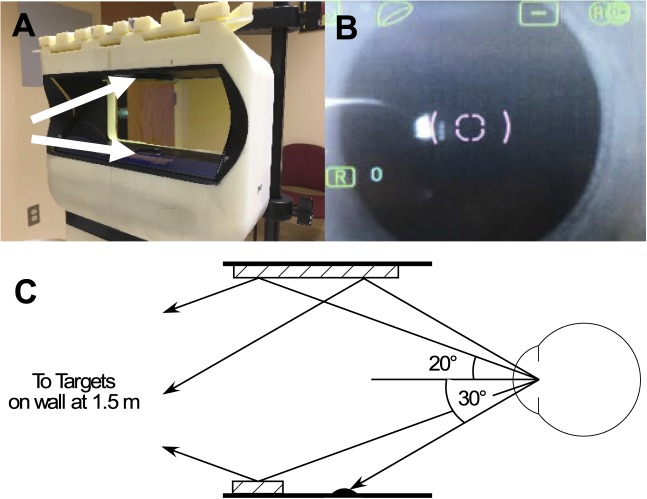Figure 1.
(A) The experimental setup including the custom headrest to allow for rotation of a child's head in order to maintain fixation in primary gaze and the cutouts on the side to allow for targets at 40° eccentricity to be seen. White arrows point to the front-silvered mirrors for measurement of vertical peripheral refraction. (B) The appearance of the pupil with fixation at 40° eccentricity. The autorefractor is centered within the elliptical pupil without obstruction by the iris. (C) Schematic diagram of mirror placement within the autorefractor housing and angles to the illuminated targets placed on the wall at 1.5 m for 20° superior and inferior gaze and 30° superior gaze. Targets were beyond the rim of the autorefractor housing and not visible to the subject without the use of the mirrors (striped rectangles). For 30° inferior gaze, subjects fixated a target placed within the hood of the autorefractor in order to avoid a mirror obscuring its camera aperture. The autorefractor would be translated and re-focused during peripheral refraction to maintain alignment with the center of the entrance pupil.

